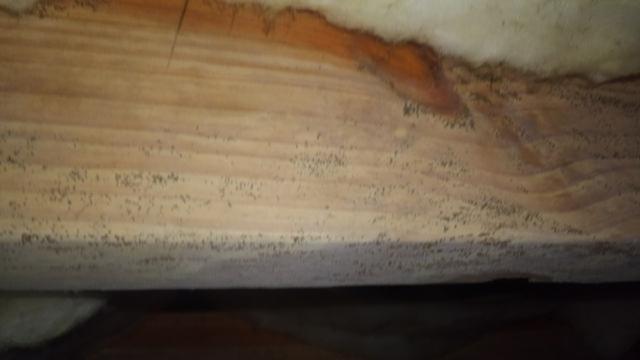
Mold and Mildew Growth
High relative humidity in the crawl space has resulted in mold growth on framing lumber, the sub floor, paper backing on insulation, and any other organic material. Mold spores are airborne "seeds" that are a product of active, growing mold. These spores make their way into your conditioned living space as air is pulled up into the home impacting your indoor air quality and irritating individuals with sensitivities such as allergies or asthma.
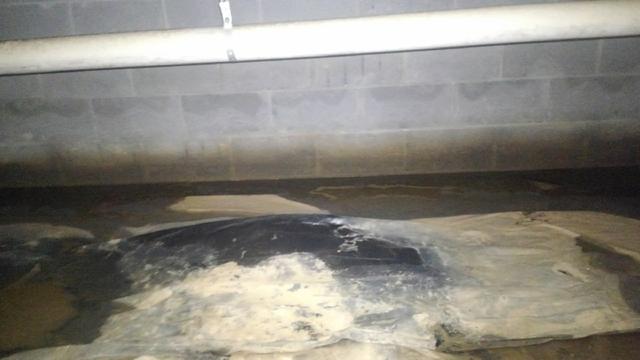
Bulk Water in The Crawl Space
Water is puddling in the crawl space, here we see it sitting against the foundation wall. Bulk water can enter the crawl space through the walls or from the ground. It can seep in during heavy rains, snow melt, or even the natural conditions of the soil. This contributes to the increase in relative humidity under your home.
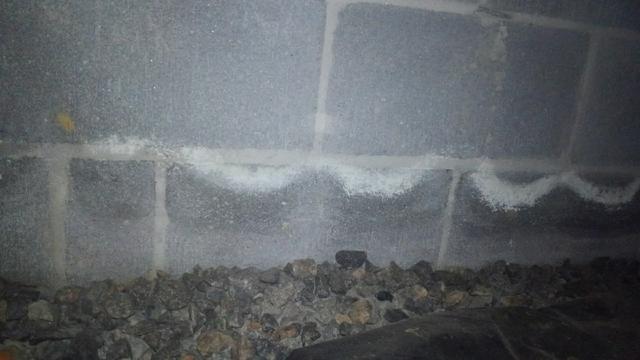
Efflorescence and Staining on Foundation Walls
The white powdery substance you see on the crawl space walls is efflorescence. It is a result of moisture pulling the minerals in the block to the surface. Though there is no water actively sitting against the wall, we can see evidence of moisture from the staining on the wall, telling us that this is a common occurrence in the crawl space.

Relative Humidity
Relative Humidity (RH) is how full the of water the air is in relation to the maximum amount of water it can hold at a given temperature. During out inspection, we use a hygrometer to read the relative humidity in the crawl space. This crawl space reads at 80.97% RH, which means the air is about 81% full of moisture. At 60% RH, the potential for mold and mildew growth occurs.
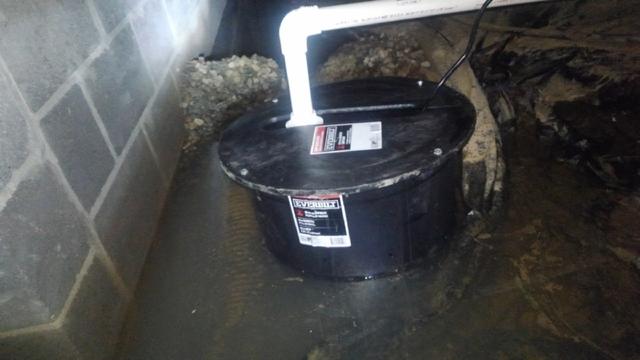
Water pooling around sump pump
This pump basin sits above grade and isn't properly draining the water in the space. Pooling water around the pump tells us it isn't doing its job of removing it from the crawl space. A proper sump system is recessed into the ground, and the basin is surrounded by rock to prevent it from clogging. The pump should have an airtight lid to prevent moisture from rising into the crawl space. This pump has a closed lid, but it isn't removing the water, therefore it isn't preventing moisture from impacting the crawl space, it's allowing it.

Unsealed Vapor Barrier
An unsealed, flimsy vapor barrier does not help protect the crawl space from water infiltration or vapor. Instead, it enables it. 6 mil vapor barriers are often staked down creating more holes and weak points in the system. Heavy duty liners like 20-mil CleanSpace are durable enough to be sealed to the wall and sealed around piers keeping water and moisture out of the crawl space.
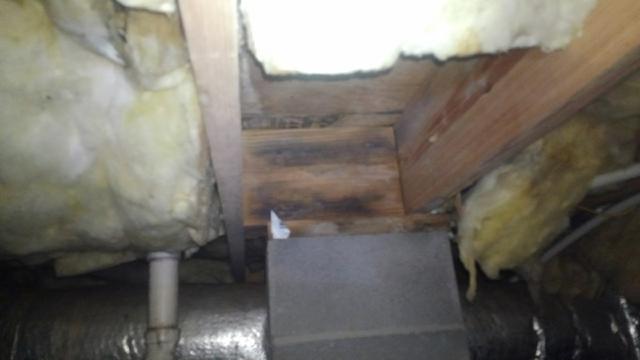
Moisture & Fiberglass Insulation
Fiberglass insulation absorbs moisture rising from the earth and holds it against floor joists increasing the wood moisture content and promoting microbial growth on organic material. Infiltrating water that has no effective drainage solution only traps the moisture in the space.

